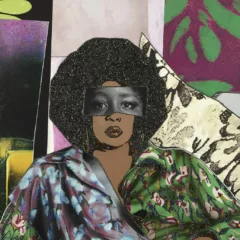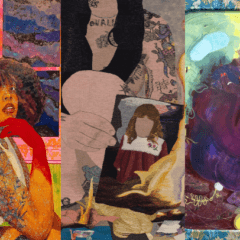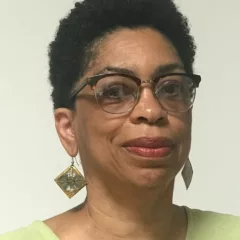Kara Crombie’s video Mother’s Birthday [Vox Populi, October 1-31, 2010] offers a new take on the cobbled-together American family. A rag-tag collection of characters from different races and centuries offer a play-within-a-play in honor of their drunken plantation-belle of a mom. Basking in the unreal glow of computer-generated twilight, they remind us how we as Americans have come to know each other through the shallow representations of popular culture. Crombie’s ability to piece together high and low, new and old is compelling, and likely a factor that helped win her a 2010 Pew Fellowship. Along with the other artists featured in Vox’s October shows, Crombie will be giving a gallery talk Sunday, October 31 at 4 pm.
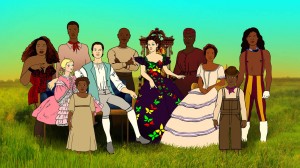
The form of Crombie’s work is that of a Greek play cycle, with this work one of three in a series set on the Aloof Hills plantation. Yet the video owes more to collage and landscape painting than the performing or literary arts. Rather than working her characters around a plot line, Crombie develops the plot out of the characters, moving them in and out of the picture and deciding on the story as she goes. The next video in the cycle awaits completion, and she has only a vague idea where the story will lead.
Many of the video’s doll-like figures were taken from Christian coloring books of a type that tries to re-envision the antebellum as a noble period. Crombie has colored them nicely, with acid reds, greens, yellows, and pinks. The backgrounds, which she filmed on an actual plantation site in South Carolina, have been saturated with the matching hues.
The artist gives sound a collage treatment too. In one scene, Mother mouths wistful lines that might have been scripted by Tennessee Williams, while a skeletal figure with the name John Barleycorn chatters his way through a speech modeled on the Emperor Marcus Aurelius’s Meditations. In another scene, Daughter Carrie Lynn and a slave child share a bath and sing Van Halen’s “Running with the Devil.” Crombie’s seemingly endless palette of sources—many furnished by random Google searches—lends a sense of richness and fascination to the work.
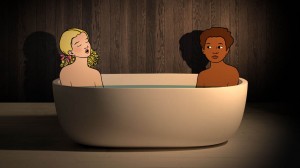
This smorgasbord of implausible sound/image combinations veers into the politically incorrect when the play starts. Mother takes a seat next to Henny, who is a composite of Wanda Sykes’ face, an antebellum dress, and a contemporary white woman’s voice. Meanwhile, slave boy and stand-up comic Marvin aims his barbs at Mother’s and Henny’s lesbian relationship. Next up is Miss Oginy, a black burlesque act named whose words mimic the “Punany Poets” seen on HBO’s Real Sex. The comedy that results exposes the naïveté of funneling expressions of identity through the media of television and popular culture.
In the show’s freaky climax, witch-lady Clara performs the classic magic trick of sawing a body in half, using Marvin as her would-be sacrifice. Reciting lines from the Psalms, the black hoodoo princess calls forth the wrath of God as she raises a sword over the child’s body. Her unsmiling face sends out a shudder of unresolved racial guilt that will not give way to the gag’s overall silliness . Day-glo postmodern coloring and a cacophony of mismatched voices do not, in the end, conceal the venom that issues from Southern ground. Talking past one another, these characters remind us of how we as a nation still do not add up to a unified whole.
319 N. 11th St., 3rd floor
Gallery hours: Wednesday – Sunday 12 – 6pm


